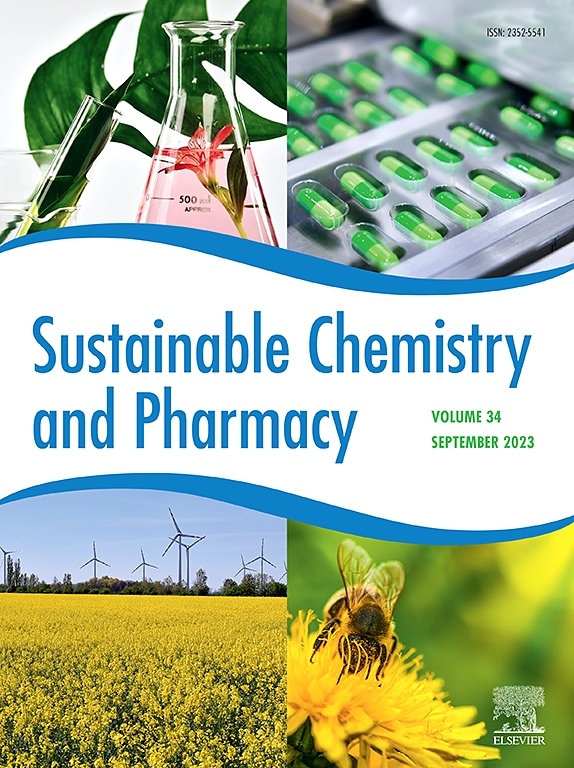Environmental sustainability through adsorption: A review of chitosan's potential in dye pollution remediation
IF 5.5
2区 化学
Q2 CHEMISTRY, MULTIDISCIPLINARY
引用次数: 0
Abstract
Globalization, growing population, and advancements in technology have catapulted the pollution issue to be a serious threat to the existence of most living beings on Earth. Consequently, sustainability has emerged as a key concern for policymakers worldwide. On a global basis, the release of several toxicants into the environment due to industrialization and community expansion is of serious concern. Enhanced and detrimental pollution is caused by dye, and this is scary as they are harmful, cannot be degraded easily, and they accumulate. To effectively mitigate the formation of such dyes in the water bodies, among several alternate pathways, biochemical adsorption has been thoroughly researched for its practical utility. Given its promising attributes, such as economic feasibility, accessibility, and compliance with environmental standards, this review article fosters the integration of three key dimensions in the mentioned research sub-theme. These refer to (a) systematic evaluation of various chitosan MOF composites with the MOF structures such as ZIF, UIO-66, MIL, and HKUST MOFs and their hybrid forms such as MOF-membranes, MOF-sponges, gels that were tailored for the dye capture purpose; (b) systematic assessment of the synthesis procedures and reaction mechanisms involved in chitosan MOF and other composite derivatives (hybrid materials) for the removal of toxic dyes from wastewater solutions and (3) assessment of the desorption efficiency, eluting solution efficacy and reusability of the chitosan MOF and other derivatives. Accordingly, future research directions have also been presented in the article for the development of efficient and scalable adsorption-based capture technologies for pollution-free environment realization.

通过吸附实现环境可持续性:壳聚糖在染料污染修复中的潜力综述
全球化、不断增长的人口和技术的进步使污染问题成为对地球上大多数生物生存的严重威胁。因此,可持续性已成为全球政策制定者关注的一个关键问题。在全球范围内,由于工业化和社区扩张而向环境中释放的几种有毒物质令人严重关切。染料造成了严重的有害污染,这是可怕的,因为它们有害,不易降解,而且会积累。为了有效地缓解水体中这些染料的形成,在几种替代途径中,生物化学吸附已被深入研究并具有实用价值。鉴于其有希望的属性,如经济可行性,可及性和符合环境标准,这篇综述文章促进了上述研究子主题中三个关键维度的整合。这是指(a)系统评估各种壳聚糖MOF复合材料的MOF结构,如ZIF、UIO-66、MIL和HKUST MOF,以及它们的混合形式,如MOF膜、MOF海绵、为染料捕获而定制的凝胶;(b)系统评价壳聚糖MOF和其他复合衍生物(杂化材料)去除废水中有毒染料的合成过程和反应机理;(3)评价壳聚糖MOF和其他衍生物的解吸效率、洗脱溶液效率和可重复使用性。因此,本文还提出了未来的研究方向,即开发高效、可扩展的基于吸附的捕集技术,实现无公害环境。
本文章由计算机程序翻译,如有差异,请以英文原文为准。
求助全文
约1分钟内获得全文
求助全文
来源期刊

Sustainable Chemistry and Pharmacy
Environmental Science-Pollution
CiteScore
8.20
自引率
6.70%
发文量
274
审稿时长
37 days
期刊介绍:
Sustainable Chemistry and Pharmacy publishes research that is related to chemistry, pharmacy and sustainability science in a forward oriented manner. It provides a unique forum for the publication of innovative research on the intersection and overlap of chemistry and pharmacy on the one hand and sustainability on the other hand. This includes contributions related to increasing sustainability of chemistry and pharmaceutical science and industries itself as well as their products in relation to the contribution of these to sustainability itself. As an interdisciplinary and transdisciplinary journal it addresses all sustainability related issues along the life cycle of chemical and pharmaceutical products form resource related topics until the end of life of products. This includes not only natural science based approaches and issues but also from humanities, social science and economics as far as they are dealing with sustainability related to chemistry and pharmacy. Sustainable Chemistry and Pharmacy aims at bridging between disciplines as well as developing and developed countries.
 求助内容:
求助内容: 应助结果提醒方式:
应助结果提醒方式:


